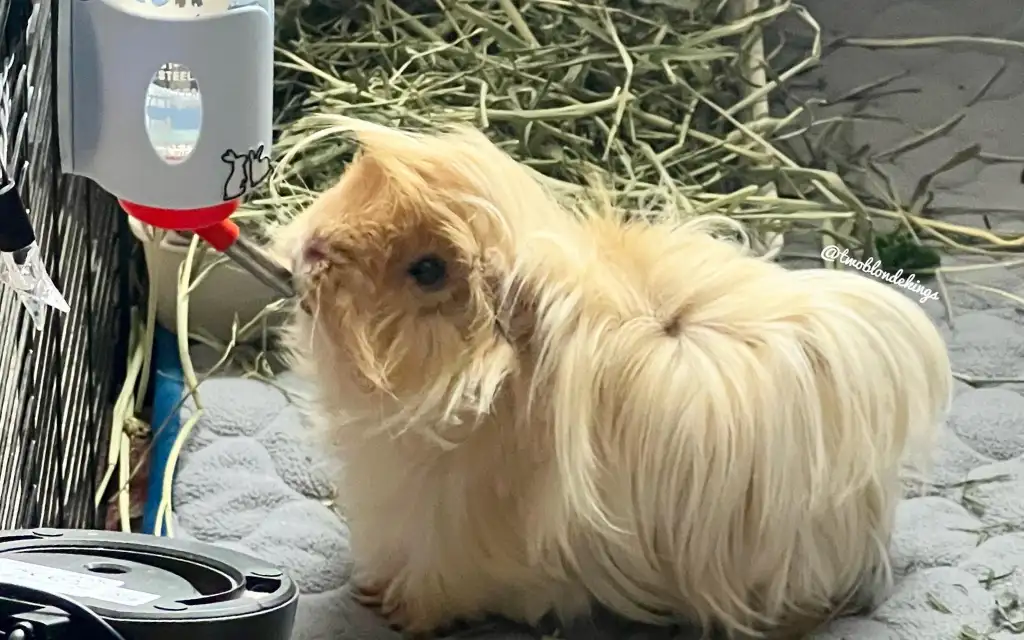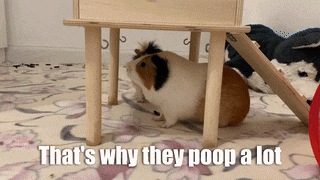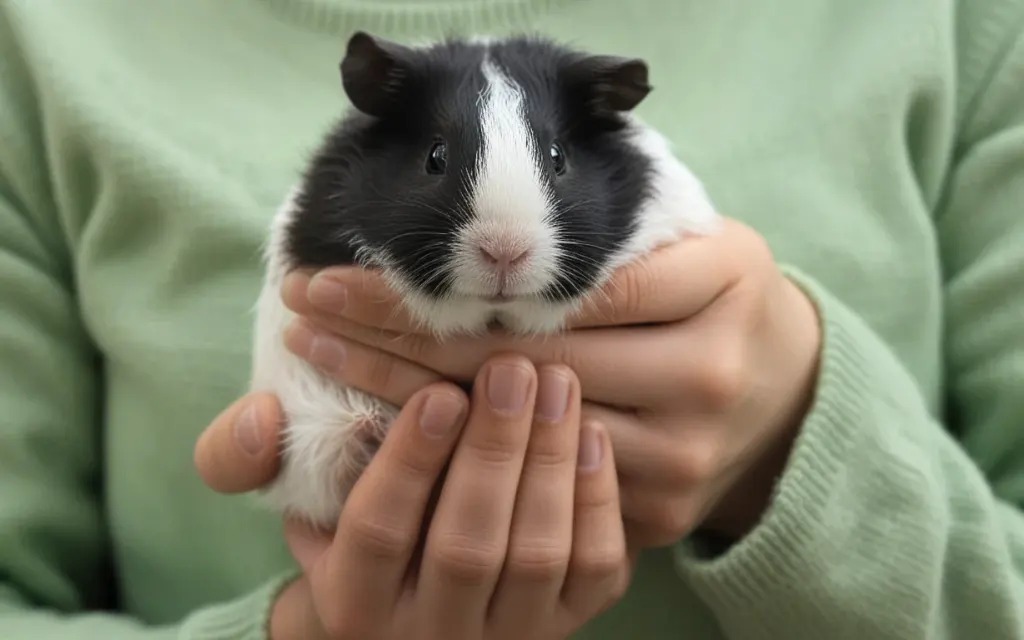Cleaning guinea pig poop constantly can make any piggy owner tired and somewhat irritated, even if they love their pet unconditionally. Guinea pigs tend to nibble every time, which leads to constant drooping.
My friends and neighbors, who are new piggy owners, often ask me, Can guinea pigs be potty trained? While these adorable pets can learn littering habits, they will never be 100% accident-free.
Follow this post to create a healthier home for your furry companion by strategic training that can cut cleanup time.
Why should you bother to potty train your guinea pig?
Potty training your piggy can help keep them healthy and lead a quality life. It can also be convenient for you. Here are some other points that show why litter training is necessary.
- Ammonia creates bad odors that build up quickly from the urine of guinea pigs. so, a particular litter area can help you and your pet receive fresh air.
- A designated pooping area can make it easier for you to maintain the cage. It requires less scrubbing time, and thus, you get more time to bond with your furry friend.
- It becomes easier to determine any changes in urine/poop if, your piggy poops or urinates at the same spot.
- The cage remains cleaner, and thus, your guinea pig enjoys healthy playtime and cuddle sessions.
How to understand guinea pig bathroom behavior?

Even though guinea pigs do not follow a constant bathroom behavior such as dogs and cats, their instincts can be favorable for you.
Prefer corners
Wild pigs often pick corners for bathroom breaks as they avoid creating a mess in their eating areas.
Pooping frequently
They cannot hold their poop for long, and thus, you need to nudge them toward the spot where they need to litter. Guinea pigs poops more than 100 times daily.
Key takeaway
You need to work with their habits, as going against them can be problematic.
Step-by-step guide to potty training your guinea pig

These steps can make it easier for you to train your piggy in less time.
Step 1: The right litter box is needed
- Using corner litter boxes, like low-entry trays, can fit snugly in cages.
- Wired floors can hurt the little feet of your piggies. So, avoid using them.
- The enclosure should be large enough so that the tiny rodents can turn around comfortably. However, for easy hops, the cage should also be shallow.
- At first, start placing 1 to 2 boxes in larger cages.
Step 2: Go for absorbent bedding
| Use | Do Not Use |
|---|---|
| Use aspen shavings as they are affordable and dust-free. | Clumping cat litter can cause blockages if eaten by your piggy. So, avoid them. |
| Brands like Carefresh offer the best paper-based bedding that can be used. | Never use pine or cedar shavings as they have toxic fumes. |
Step 3: The itter box should be placed strategically
- Place some hay near or in the box to lure them in as these tiny rodents love munching even while pooping.
- Monitor where your piggy pees most of the time and place the box accordingly so, that they use it.
Step 4: Positive reinforcement is necessary
- If you notice your piggy using the box while pooping or urinating, offer them a veggie treat immediately.
- Scanning or shouting can cause setbacks and stress. So, try to stay calm even after accidents made by your beloved pet.
- To make them learn where to pee or poop, move stray poop into the box.
Step 5: Cleaning consistently can be a good idea
- Wash the box weekly with vinegar/water. Avoid using harsh chemicals while cleaning.
- Scoop and replace soiled bedding regularly.
Extra tips for faster results
Here are some expert-approved strategies that can help you get faster results.
Their natural schedule and training sessions should match
You need to monitor where they go immediately after eating or waking up. If you notice your furry friend is using the litter box, offer them treats to motivate them. Dawn and dusk are the times of day when guinea pigs are most active.
A bathroom area can be created
Always place the litter box in a low-traffic and quiet area of the cage to prevent distractions. Avoid placing the box in busy areas like near the water bottle, ramps, and hideouts.
Your furry friend may need some privacy while pooping. So, to make the space feel safe, you can use a small cardboard divider.
To prevent setbacks, monitor health issues
Medical issues, such as excessive urination or diarrhea, can change the habits of these little pets and can derail their progress. Consult a vet if you notice changes in their nature call.
Use different style boxes for picky pigs
Some picky piggies may need more privacy. So, you can use shallow plastic storage bins and deeper trays instead of boxes. Line the box with a seagrass mat to make it comfortable and safe.
Stay consistent
To make the litter area appealing, refresh the hay twice a day. Cleaning the box daily at the same time works best.
What are some common mistakes that need to be avoided?

- Scented products can irritate your piggie’s nose. So, avoid using them.
- Staying consistent with routine can only give success as progress is gradual. So, do not quit too soon.
- Place the box in one spot because changing the box’s location can confuse your furry friend.
Troubleshooting: What if your guinea pig ignores the box?
Problem: Your piggy may be using the box as a nap spot or bed.
Solution: Always keep the litter box clean and place a soft hideout near the box. As guinea pigs love cozy corners, they will prefer a hideout for resting instead of the litter box.
Problem: These pets can kick bedding out of the box.
Solution: Avoid deep bedding. To contain the mess, attach a low barrier or use a litter box with higher sides.
Problem: After a few days, they may start avoiding the box.
Solution: Try a different bedding texture and refresh the hay lure daily.
Problem: Territorial Behavior.
Solution: Shy piggies can get stressed out by the dominant ones as they may guard a single box and do not allow other shy cage mates to use it. So, to prevent competition, add multiple litter boxes.
Problem: They may pee in the box but not poop.
Solution: Most piggies cannot fully master their poop habits. So, don’t get dissapointed if you find them urinating in the box but not pooping. You can move stray poop into the box while cleaning the cage. Don’t demand perfection and focus on progress.
Final touch-up
As guinea pigs are known as tiny poop machines, so you cannot expect them to be 100% perfect and accident-free. Consider it a positive sign if there is some reduction in stray poop. Less stray poop means less cleaning time and enjoying more time with your furry companion.
Strategic training, patience, and positivity can create a healthier home for your piggy and help them learn their littering habits faster.
